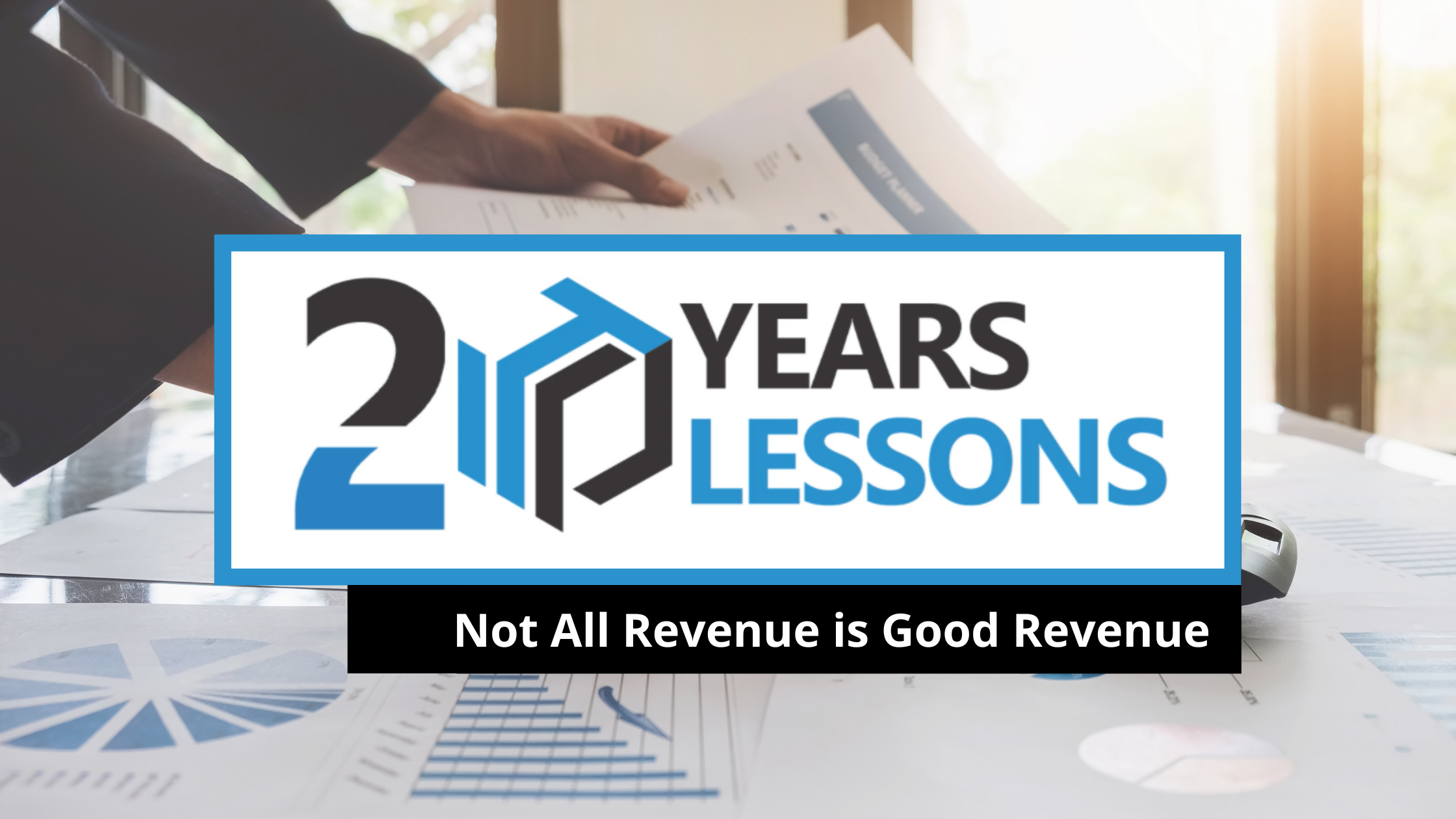
We’ve all heard the old saying: “follow the money.” In Mytech’s early days, we did exactly that.
For years, we measured ourselves by our revenue growth, and put the focus on winning every deal possible. When we evaluated an opportunity, our main qualification was “does this company have the funding?” and if they did, we were off to the races.
It seemed like a no-brainer. If we’re really so great at what we do, shouldn’t we be able to work with anybody? And after all, isn’t “gain more customers, generate more revenue” the goal of any growing business? So we tried to do just that, and we gained plenty of customers. But we kept running into complications.
Complications come from misalignment
As we grew and worked with different kinds of organizations, certain customers kept experiencing issues. It felt like we were spinning our wheels, and we weren’t able to deliver the reliability and productivity we’d promised. The companies who experienced these problems either got (understandably) upset and left their agreements early, or stayed and kept having problems – costing us more in work-hours and materials than we received in payment, and creating a situation where nobody was happy!
The problems weren’t unique to a single type of company. In fact, they came from a wide range of industries and company sizes, across our entire customer base: there was nothing unifying this “bad” revenue that we could point to and say “this is the reason!”
But that was exactly the problem: there was no order or logic to our customer base. When our standards for partnership were just “whoever’s nice and willing to pay,” it was impossible to select fully compatible partners. This became even more obvious after we crystallized our organizational strategy, and realized that the way we choose to do business just won’t always work for every prospective client.
Good revenue is a foundation
We’ve learned over the years that we aren’t suited to every type of organization. To deliver the value and productivity we promise, both Mytech and our clients need to be in it for the long haul. We have to partner with our clients and continually improve their experience, not just fix things whenever they break. Clients who buy into our proven IT strategy, and invest in that improvement, will get much more out of our services as a result.
But good revenue isn’t just about alignment and efficiency! The real advantage comes when we get to know our clients, and build a foundation of trust. The client is interested in a stable, long-term partnership and is willing to invest in proven, measurable improvements. That openness helps them maximize their IT investments to both increase productivity, as well as predict & mitigate disasters. Meanwhile, instead of jumping between isolated emergency fixes, Mytech can stay firmly planted and keep building on the prior investments our clients have made, towards a strategic IT plan that meets their long-term goals.
Finally, good revenue multiplies. Because it leads to strategically-aligned and happy clients, it’s the fastest way to build a network of qualified referrals. Those recommendations from our current clients give us a chance to interact with other organizations – who often share the same priorities and values! And thanks to our client’s vote of confidence, those prospective organizations are much more likely to consider a partnership with Mytech.
Recognizing the Right (and Wrong) Fit
Setting these expectations and standards for our business was difficult. It’s hard to turn down a brand-new source of revenue, regardless of red flags. It took a lot of time and effort: we had to codify exactly what made something “good” revenue, and we had to train our teams to understand this new way of thinking and take it to heart. Every time we made the tough call to back out of a potential opportunity, we just had to remember the old days of “Good news: we got a new customer! Bad news: we got a new customer.”
It’s also caused big changes to our lead qualifying process. As Brandon, our Colorado Sales Manager, puts it:
One of the first things we have to establish is what “managed services provider” means to them. Are they just looking for someone to fix their computers? Or also help them buy new ones? Maybe they even want to talk strategy, and plan for future changes.
Mytech isn’t set up to just be an order-taker: for us to truly give our clients the value they expect, we need to be an advisor. Our sales & prospecting activities are often focused on learning more about the problems an organization is trying to solve. Once that broader picture is identified, we hope to explain what our proven strategy can do for the organization, and make sure that they’re onboard with that dynamic.
If they aren’t ready for that level of involvement, there isn’t much we can do. No matter how many adjustments we make, we aren’t just an order-taker; our solutions aren’t efficient and economical unless they’re part of a bigger picture. That’s how we make our prospecting decisions, and that’s how we can tell “good revenue” when it comes along: the client is excited to talk about tomorrow’s IT needs – not just today’s.
Not quite perfect, but aiming for it
Once we learned to say “no thanks” to potential partnerships that wouldn’t benefit either party, both parties started to benefit much more from each partnership. With these new guidelines in place, everybody – Mytech and the client – can get the most value out of the partnership. The client can see measurable improvement in their IT systems and know that their investments are delivering the consistency and efficiency they need, and this stability lets them focus on driving their business forward. And we’re able to provide our services for a reasonable profit, without spending extra resources resolving constant preventable emergencies.
Of course, no relationship is perfect: every client situation is going to have unique business challenges. We strive to build a foundation of shared values and good communication, so together we can more easily work through unique challenges. But we know that priorities and situations might change over time, and what was once a good fit no longer seems to work the same way. There’s no way to prevent that disconnect from ever happening, but we can eliminate a lot of uncertainty by carefully evaluating a prospective client’s goals, expectations, and priorities before we enter into an agreement.
And if there’s ever a special circumstance where we need to partner with an organization outside our “sweet spot,” we’re now able to go in with our eyes wide open to the potential risks. That awareness benefits both parties by establishing the scope of our engagement: we both know what to expect more clearly, which helps Mytech avoid overpromising or under-delivering.
-
Nowadays, we don’t blindly pounce on every potential opportunity. We’ve learned the signs that our process might not help a given organization achieve success, and understanding those differences helps us politely and respectfully excuse ourselves from consideration. Mytech’s way of doing business isn’t always the best fit, and we’re not afraid to acknowledge that. By doing so, we demonstrate respect for both the organization’s time and way of doing business.
But this acknowledgment of our limits also benefits Mytech! It frees us up to seek the potential clients who can truly benefit from that partnership: the ones who will achieve four times more value and productivity from their IT investments.
|


